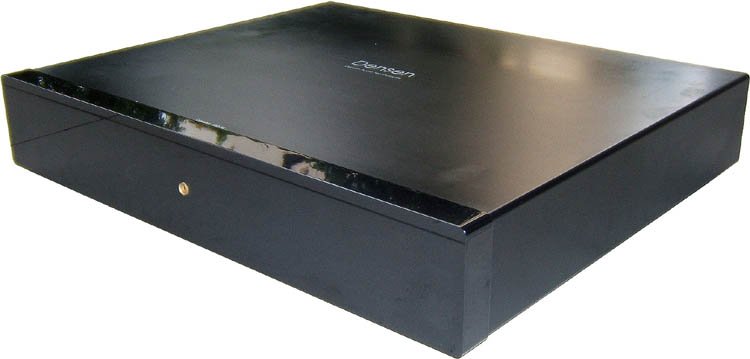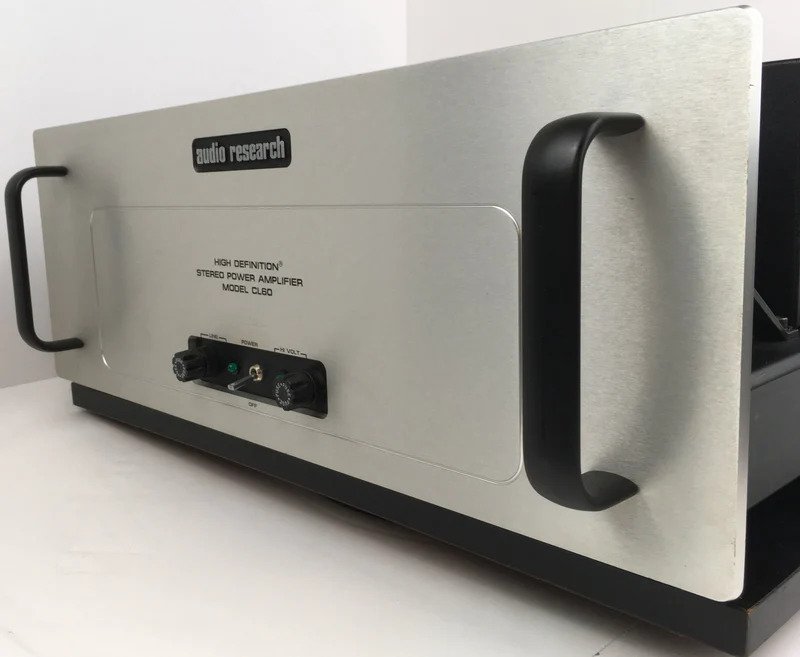
The number of amps I’ve owned in my home is 49. Some of them were back-breaking heavy. And since my listening room/attic is on the third floor and I’m a skinny guy with no muscles to show off, it wouldn’t have been possible for me to try out all these amps and subsequently write this article if not for the invaluable help I received from my son who did the heavy lifting for me. It’s why I wrote about the crucial role he plays in my audio hobby.
Of course, having owned 49 amps doesn’t make me an amp expert. There are so many different brands and models and topologies out there that I’m far from having heard it all. But 49 is still a lot of amps for one person to have heard, and I believe this is what makes the observations below valuable. These 49 amps were all evaluated through the same lens, by the same person. The opposite of that—reading 49 people’s opinions about 49 different amps—would be much less meaningful. It’s best to keep the context consistent for the observations to be helpful.
So, here it is: 3 things I learned about (using a whole lot of)… amplifiers:
1. It’s a bad idea to search for “the perfect amp”
The only way to find the perfect anything is to go through lots of them (romantic partners excepted). And that’s what I did with speakers, cables, DACs, digital source players, mainly computers, and amps. There are two problems with the last category. That’s because a) the relationship between amps and speakers is iffy impedance- or sensitivity-wise, so perfect synergy between them isn’t a done deal even when you match them according to their specified measurements. And b), for whatever reason, amplifiers, for me, have been the most electronically unreliable category of components of all of them . Speakers, DACs, digital source players and, of course, cables? Reliably reliable. But about a quarter of the amps I tried gave me some trouble. Maybe I was unlucky, but this finding is from a pool of 49 amps. I’d guess it has something to do with the fact that the amplifier represents the hardest working stage of an audio system. In any case, if you’re thinking “I’ll go through lots of amps to find the perfect one”, I suggest you think twice about it; there were pros and cons to every amp I tried, and often “upgrading” involved an exchange in pros, but also cons. My advice: if you think your amp is good enough—if you’re generally happy with it—don’t risk trading it in for something that might be plagued by cons that will make you regret selling the amp you were happy with. Look instead at what else you could upgrade.
2. The importance of power rating is exaggerated
Whenever I read about amps online, the most frequent discussion revolves around the power rating. Comments invariably include, ‘What’s the power rating of that amp?’, ‘You need at least X watts to drive those speakers’, ‘Amp A is 200 watts but amp B is 300 watts so B must be more powerful’.
The thing is that people use the word “power” in two different ways: (1) as a measurement, and (2), as a feeling of energy. If I was you, I would dismiss any opinion or advice regarding power rating if it’s used in the latter sense. It’s not uncommon for a 50Wpc amp to sound more powerful than a 150Wpc one. If that chest-thumping feeling is your holy grail, try not to find it solely based on power ratings. You can get it more easily by taking other routes, such as with speaker placement, room treatment, or an upgrade in your source.
As for power rating as a measurement, this is directly related to a speakers’ sensitivity, specified in decibels, and the amp’s and speaker’s impedance relationship, specified in ohms. The lower the speaker’s nominal impedance, the more it’ll try to draw current from the amp. If the amp is unable to satisfy demand, it can clip, which distorts the sound and puts the speaker at risk of damage. The general rule here is that a speaker with a lower nominal impedance, say, 4 ohms (most measurements are specified in the product’s user manual), should be mated to an amp rated to output a similar low level of impedance. This will help ensure sufficient current to feed the speaker comfortably. The general rule regarding speaker sensitivity is that the lower it is, the more watts per channel you may want so the amp has enough headroom to make your music come alive. Get this fundamental stuff right, and the amp’s actual watts per channel measurement becomes a moot point and is much less important than other things on your priority list, such as sound quality.

3. Using an integrated amp is a GREAT idea
For sound quality, I had much better luck with integrated amps than by using a power amp with a separate component, either a preamp or DAC.
Going the separates route complicates things. There are more variables to deal with than with an integrated amp, unless, possibly, the separates are same-brand products conceived to work together synergistically. Still, a component’s sound quality is a function of the cumulative effect of everything in the chain, including cables and electronic parts that impart their characters on the separates. Signal paths are also much shorter in an integrated amp, which should, theoretically, contribute to better sound quality. And you can generally trust that a reputable audio designer or manufacturer did his best to assemble all the parts of that integrated amp so that it sounds “of a whole”. If you want more flexibility when it comes to upgrade paths with an integrated, make sure it has inputs and outputs to accommodate other components.
And now, for my top 3 amps of the 49 I’ve tried. But first, the 49 amps:
Adcom GFA-555, Alesis RA-100, Aragon 8008×3, Arcam A85, ATI 1560, Audio Research D115, Audio Research D115 MKII, Aura Evolution VA100, B&K 2140, B&K ST55.2, BAT VK200, Bryston 3BSST, Bryston B60, Carver TFM-35, Classe CA300, Core Audio Kratos, Creek 4040 S3, Creek Destiny, Creek Evolution 2, Densen DM-30, Fosgate 4200, Krell KAV-500, Krell KSA-100, Luxman M-111, Marantz PM7000, Mark Levinson No 27, McCormack DNA125, McCormack DNA250, McCormack HT-5, McIntosh MC2105, McIntosh MC2200, McIntosh MC2205, McIntosh MC2505, McIntosh MC7270, Nakamichi PA-7, Onix Melody SP3, Onkyo A-9555, Parasound A21, Pathos Pathos One, Primare A20 MK II, Proceed AMP5, Sansui AU-9900, Sonneteer Bronte, Stasis PA-5, Trends TA-10.1, Wyred4Sound ST-1000, Yamaha M-60, Yamaha RX-V770 Stereo Receiver
My 3 personal favourites?
Proceed Amp5, for its gusto and swagger
A five-channel amp that I used in a bi-amping setup to drive a pair of speakers. It was my first taste of high-caliber amplification.
Audio Research D115, for its vivid and organic character
For the longest time, this tubed design was the best amp I’d heard. When I heard it again recently, I found it a bit different from what I would now consider “accurate”. I remembered it as being very musical.
Densen DM-30, for its smoothness and neutrality
If my memory’s correct, the Densen DM-30’s sound quality matched those of the other two, but without their respective heat and weight, and probably without the slight euphonic quality of the D115. And it’s the one I ultimately preferred over the other 48 amps based on three criteria that mattered to me: sound quality, reliability, and heat emission. It’s supplying the juice to my current system and it’s not going anywhere.
Read more of this series:
· 3 Things I Learned About… Interconnects
· 3 Things I Learned About… Digital Playback
· 3 Things I Learned About… Speakers
· 3 Things I Learned About… Magnepan Speakers
TO SUBMIT YOUR OWN “3 THINGS I LEARNED ABOUT… “ ARTICLE (IT CAN BE ABOUT ANYTHING AUDIO-RELATED), SEND IT HERE.










Leave a Reply